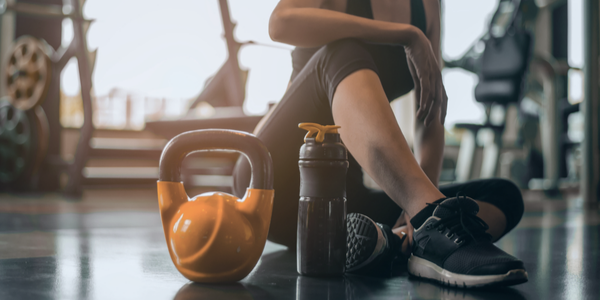
You know they're coming. It's almost time.
No, not the relatives … the resolutions! As you're making your way through the holiday season, toasting to everyone's health and well-being, and thinking ahead to next year, you'll probably give a moment's thought to what your own health resolutions for the New Year might be.
Maybe you want to start a diet and exercise plan. Maybe you want to eat better; perhaps you're planning to actually exercise more often, rather than just thinking about it more often.
Maybe you don't want to take on too much; you don't want to tackle the whole kit and kaboodle at once with your diet and exercise plan. If this is the case for you, you're likely considering which of these is best to start with. Shall I diet? Shall I exercise? Where to begin? It's a perennial debate, even in medical circles.
Consider a recent issue of the Journal of the American Medical Association. In one article, new research showed that a person's body mass index is more closely associated with his/her diabetes risk than is that person's activity level.
Another article, in the same issue, showed that a woman's risk of heart disease is more closely associated with her activity level than it is with her body mass index.
So where do you start in your diet and exercise plan?
The data aren't exactly contradictory, but they do suggest a greater causal significance for weight, in the first case, and for physical inactivity in the second. This sort of disparity is what leads to the old "fatness versus fitness" debate. Can you be fat and still be healthy?
The truth is that if you're overweight, you're at a higher risk for both heart disease AND diabetes, and other factors may put you at higher risk for one or the other, or something else entirely.
And yes, there are indeed a few people who carry excess body weight, and yet all their blood work comes up healthy, and they're active and physically fit. But the fact is, people who are fat and fit are the exception that makes the rule. And they're few and far between. Most Americans are sedentary and overweight. In my clinical experience, it may start with one or the other, but almost always ends up being both.
So if you're trying to decide how to tackle a weight problem, there's no obvious answer suggested by the research. If you change your diet without exercising, you may drop weight without other significant health improvements you want to achieve. Will it stay off? Statistically, if you don't start exercising eventually, the chances aren't very good.
But if you exercise without dietary change, you can improve fitness and strength without ever losing any weight. Many people do. In spite of increased strength and energy, these folks often end up giving up the activity because when we're working hard to build strength, we want that effort to help us feel better about how we look, too.
So is there an actual answer to what's more significant, the weight or the inactivity? The answer is: it depends!
But perhaps a better answer is: Who cares?
In the same issue of JAMA, there's a very good, common-sense editorial that says, in part, "… the relative contribution of fitness and obesity to overall health and risk actually may be a trivial matter, because a common treatment is already available for both…"
That's right. And you didn't hear it here first. It's the same old conventional wisdom we've always had. Physical activity, combined with a balanced diet, reduces our risks for just about every aliment that exists. Whether it's diabetes or heart disease that you are trying to avoid, neither of these two lifestyle changes, if done correctly, are likely to increase your risk. Get up, exercise. Go out, fill your pantry with nutritious food items. Do these two simple things, and your changes for living a life free from diabetes and heart disease increase.







